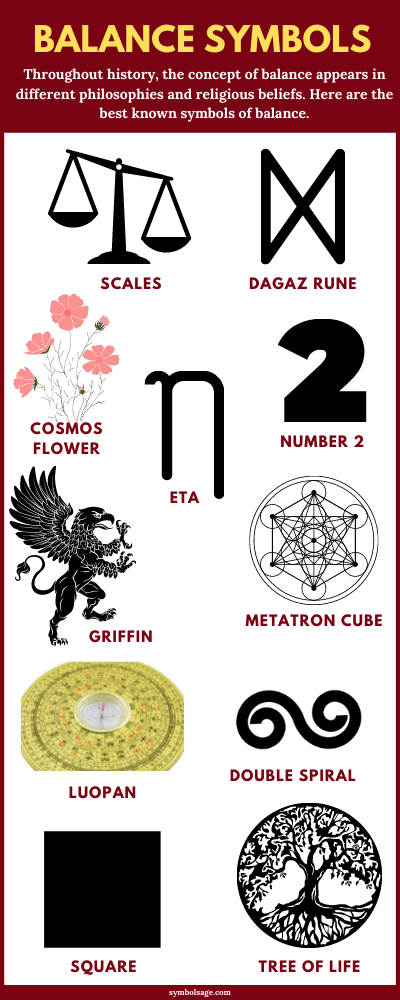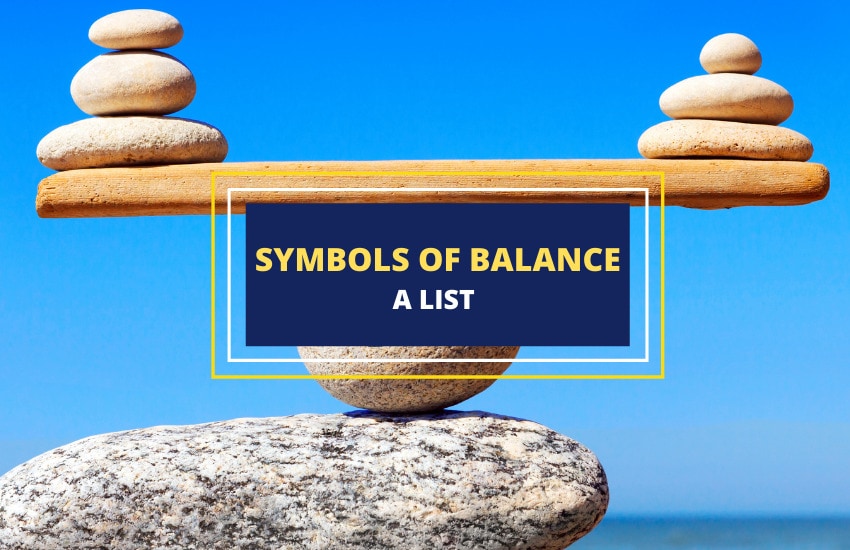
Table of Contents
Throughout history, the concept of balance appears in different philosophies and religious beliefs. Aristotle introduced the Golden Mean philosophy, where he described moderation as virtue and taught the idea of finding balance.
Buddhism has a similar concept, extolling the virtues of the middle way, which avoids the extremes of self-indulgence and self-denial. In this way, balance has always been an important aspect of a life well-lived.
Here’s a look at the different symbols of balance and how they’re interpreted by different cultures around the world.
1. Eta

The seventh letter of the Greek alphabet, Eta is associated with balance and the divine harmony of the seven planets. In the early 4th century BCE, Greek vowels were attributed to the planets, and Eta corresponded to Venus or Mars—based on the Chaldean order of the planets.
It’s said that the early Church Father Irenaeus of Lyons also associated the letter with one of the seven heavens of the Gnostics, as it was believed that each heaven had its own chief ruler and angels.
2. Dagaz Rune
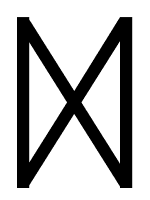
The 24th letter of the runic alphabet, the Dagaz rune represents the balance between polarities, especially of light and darkness.
It is the phonetic equivalent of D, and is also called Dag, meaning day. Therefore, it’s also regarded as the rune of light, and of midday, and midsummer.
It’s seen as a beneficial rune, as light is believed to bring happiness, health, and prosperity.
3. Saille

In the ogham alphabet, Saille corresponds to the letter S and is associated with the willow tree. In divination, it suggests balance and harmony, being in tune with wisdom that comes from dreams and otherworld sources.
In early Irish law, the willow was one of the seven noble trees associated with water and the moon. It’s thought that the watery symbolism of Saille brings harmony into the flow of events.
4. Number 2

In Taoism, the number two is a symbol of order and balance. In fact, 2 is a lucky number in Chinese culture as good things come in pairs. In a modern interpretation, it’s a symbol of partnership and cooperation.
On the contrary, number two represented diversity to Pythagoras, and was thought to be associated with evil.
It’s one of the reasons why the second day of the second month was considered evil and dedicated to Pluto, the god of the underworld.
5. Jupiter

Planets were thought to have some sort of influence on people and a particular day of the week. Jupiter is symbolic of balance and justice, likely because of its central position in the orbital line of planets.
For the same reason, it’s also associated with Thursday. Based on the system developed by Ptolemy, the Harmonia Macrocosmica in 1660 portrayed Earth at the center of the cosmos, implying that the symbolism of Jupiter is relatively modern.
6. Yin and Yang
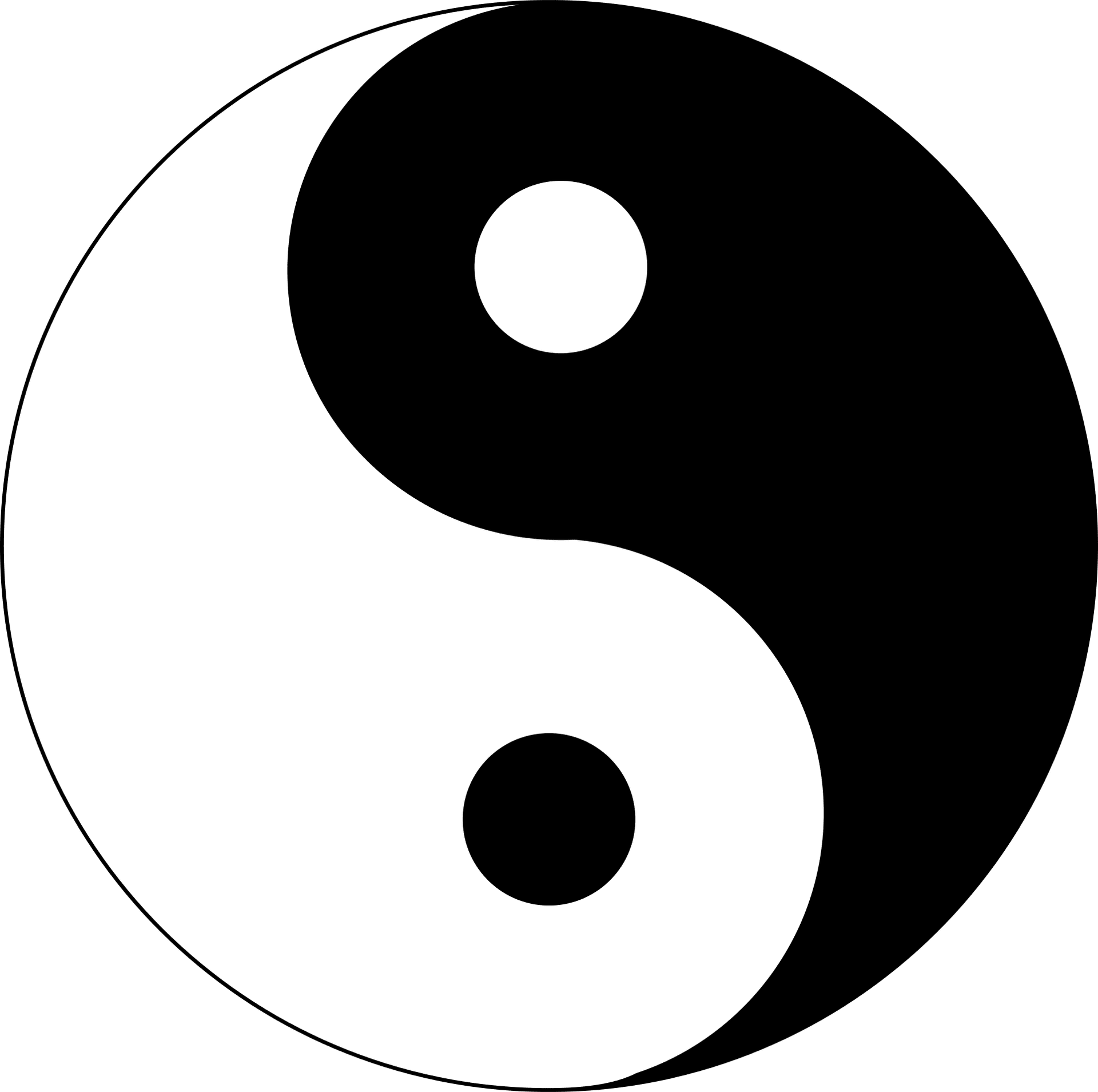
In Chinese philosophy, Yin and Yang represents the balance and harmony of opposites that make up all aspects of life. While Yin is female, night, and darkness, Yang is male, day, and light.
When there’s too great an imbalance between the two, catastrophes occur. This symbol was influenced by Taoism and Shinto religions that highlight the importance of living in harmony with nature.
Taoism began with the teachings of Lao Tzu, who wrote the Tao Te Ching around 6th and 4th centuries BCE.
He wrote that everything in nature is symbolic of the natural order of things. For example, the Yin could be signified by valleys, and the Yang by mountains. Yin and Yang became known in Japan as in-yō.
7. The Scales of Justice

Since ancient times, the symbol of a pair of scales has come to represent justice, fairness, balance, and non-discrimination. Its symbolism of a balanced judgment can be traced back to ancient Egypt when the heart of a deceased was weighed against the feather of truth by the goddess Ma’at.
If the heart was lighter than the feather, the soul was considered worthy of entering paradise—the Egyptian afterlife.
By the time of the ancient Greeks, the scales became associated with the goddess Themis, the personification of justice, divine order, and good counsel. In modern times.
It is also associated with the system of checks and balances in government, which limits and controls the political powers of each branch—legislative, executive, and judicial.
8. The Griffin

Often depicted with a bird’s head and a lion’s body, griffins were thought to be guardians of treasures, protectors from evil, and beasts that killed men.
They were a popular decorative motif in the Levant region during the 2nd millennium BCE and were featured in Egyptian and Persian art. They also appeared in ancient Greece at the Palace of Knossos, as well as in mosaics of the Late Byzantine.
In 1953, the griffin was incorporated into heraldry, The Griffin of Edward III, as one of the queen’s beasts.In different myths, they’re interpreted as symbols of power, authority, strength, and protection.
However, the mythical creature has both good and bad qualities, so it also became associated with the balance between good and evil.
9. Temperance Tarot
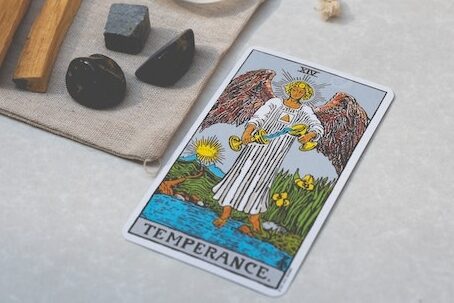
Tarot cards first emerged in Italy in the late 13th century as playing cards, but they eventually became associated with the occult and with fortune-telling in France in 1780.
The Temperance tarot is thought to represent balance and the virtue of moderation so that someone’s life can be peaceful and fulfilling. When reversed, it symbolizes imbalance, disharmony, and lack of patience.
10. Metatron Cube
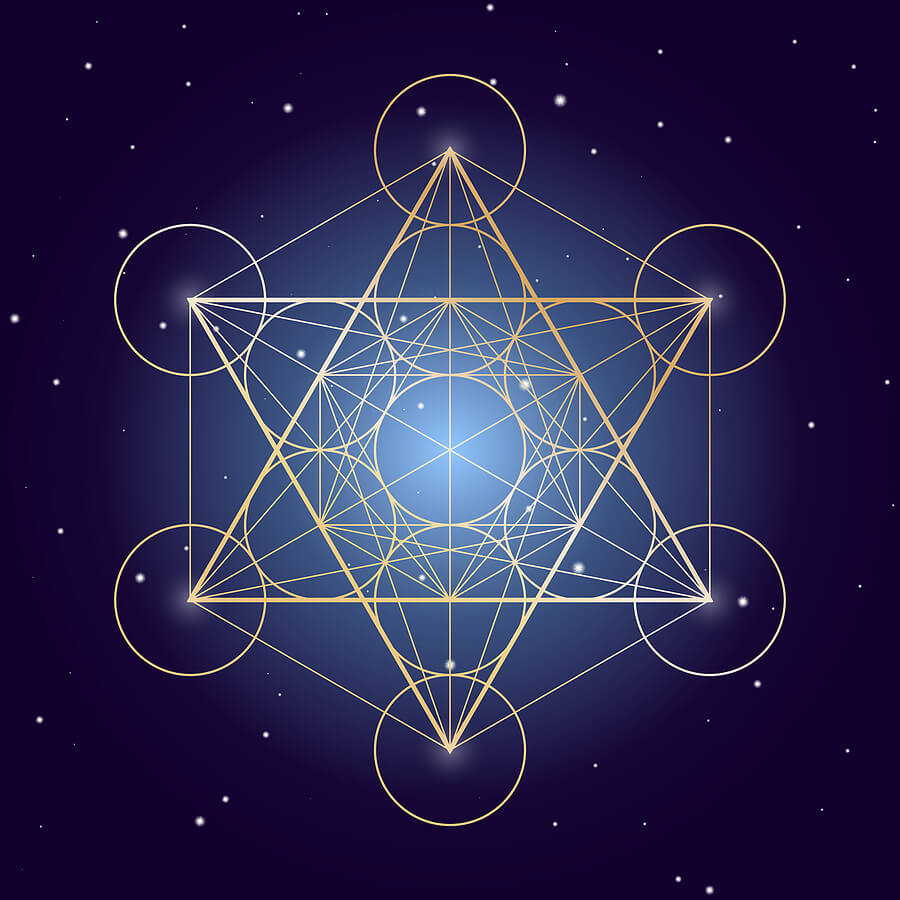
In sacred geometry, the Metatron cube symbolizes the balance of energy within the universe and the interconnectedness of all things.
The term Metatron first mentioned in Talmud and Kabbalistic texts of Judaism and is thought to be the name of an angel who is capable of attracting positive energies and dispelling negative ones.
The Metatron cube features a series of connected lines from various shapes known as the Platonic Solids. It’s said to contain all the geometric shapes found in all creation, from heavenly bodies to organic life forms, flowers, and DNA molecules.
In modern times, the symbol is used in meditation for promoting peace and balance in life.
11. Double Spiral
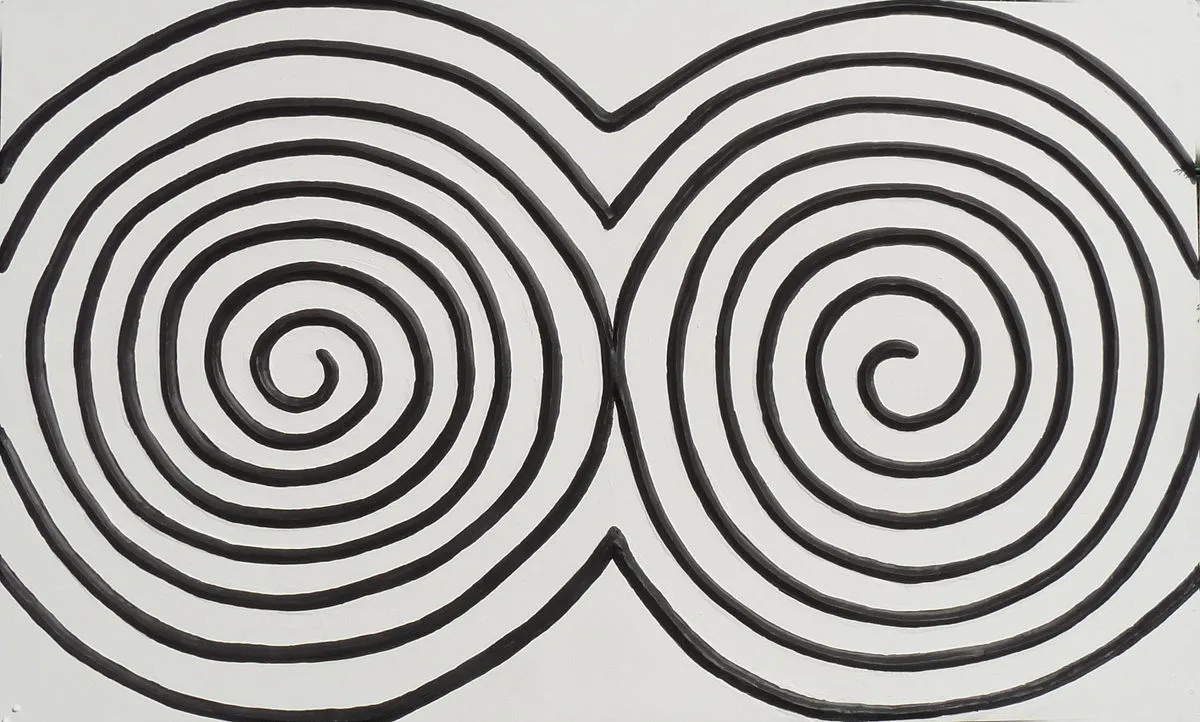
The ancient Celts honored the forces of nature and believed in the otherworld. Little is known about their religious beliefs, but the double spiral is thought to represent the balance between two opposing forces.
Some interpretations also include the equinox, when day and night are of equal length, as well as the union between the earthly world and the divine world.
12. The Celtic Tree of Life

There are several interpretations of the Celtic Tree of Life, but it’s also believed to be a symbol of balance and harmony.
The tree gets old and dies, yet it’s born again through its seeds, reflecting the never-ending cycle of life. It represents the connection between heaven and earth, where its branches reach up to the sky and its roots extend to the ground.
13. Luo Pan
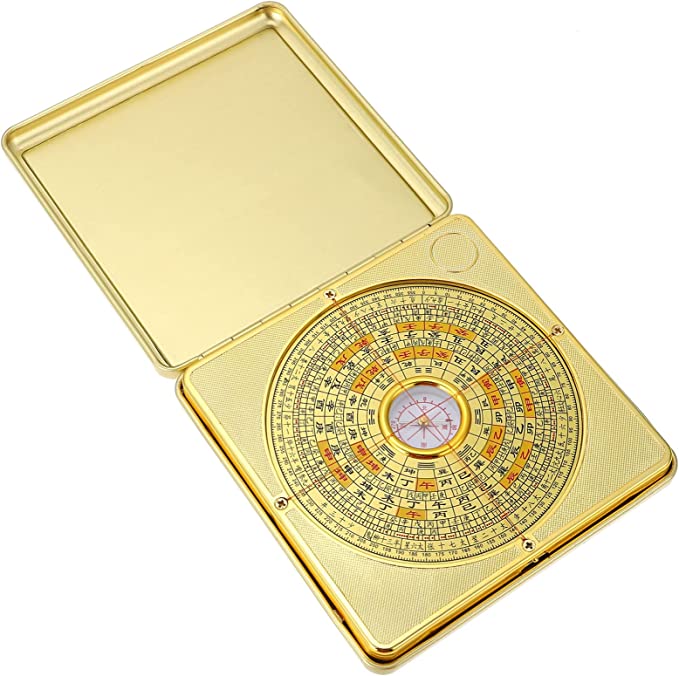
A symbol of balance and direction, the luo pan, also called the Feng Shui compass, the luo pan is typically used by experienced feng shui practitioners to determine the directions of a home, and then create an accurate bagua map.
It’s believed that living in harmony with one’s surroundings will maximize the flow of energy.
The word luo means everything, and pan translates as tool or plate. It consists of concentric rings with Feng Shui symbols, as well as heaven dial and earth plate.
Contrary to the traditional Western compass that points north, the luo pan points south. Generally, the facing direction is where the front door is located, while the sitting direction is the back of the house.
14. Square

Because its four sides are equal, the square has become associated with balance, steadfastness, law, and order. Throughout history, the square has been used to demonstrate these concepts.
It appears in Leonardo da Vinci’s The Vitruvian Man, illustrating the artist’s belief in the divine connection between the universe and the human form.
Pythagoras associated the square with the number 4 which relates to qualities like stability and consistency. Most building foundations are squares or rectangles, as they encourage permanent structures. Some of its symbolism also includes the four elements, four directions, and four seasons.
15. Cosmos Flowers

Sometimes called Mexican aster, cosmos flowers are symbolic of balance and harmony. They’re adored for their colorful daisy-like flowers that bloom throughout the summer months.
In some cultures, they’re believed to restore spiritual harmony in the home. They’re also associated with joy, modesty, peacefulness, and tranquility.
Wrapping Up
From alphabetic letters to numbers and geometric shapes, these symbols remind us to be balanced in all things. Most are recognized around the world, whereas some are more obscure and are known in certain regions.
Similar Articles:
19 Powerful Symbols of Optimism and What They Mean
Top 10 Symbols of Grace and What They Mean
15 Powerful Symbols of Abundance and What They Mean
Top 15 Powerful Symbols of Humility and Their Meanings
19 Important Symbols of Independence and What They Mean
